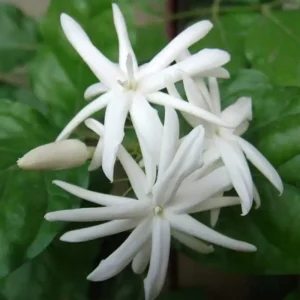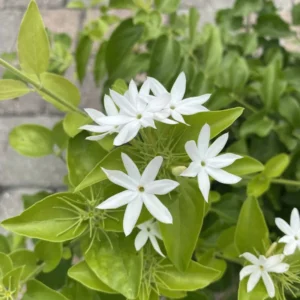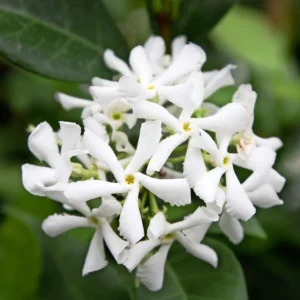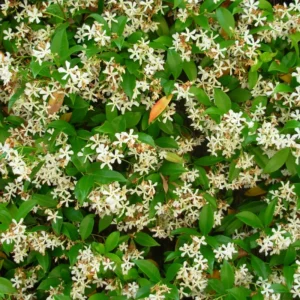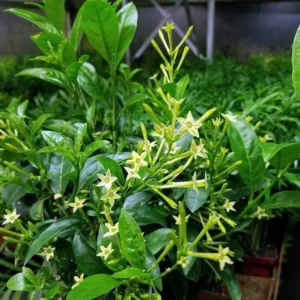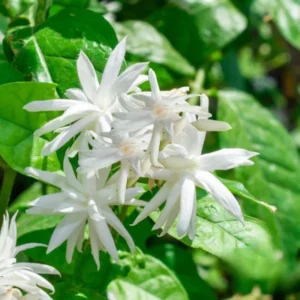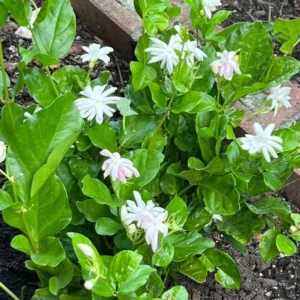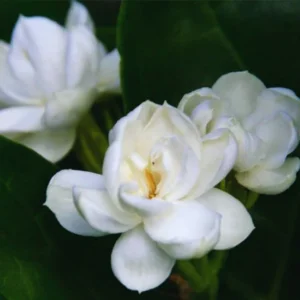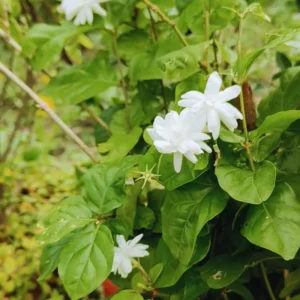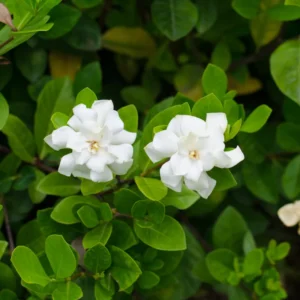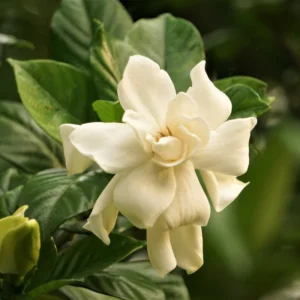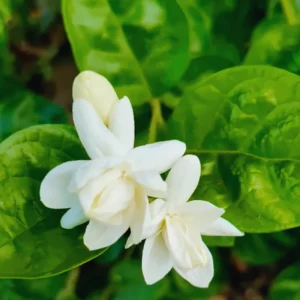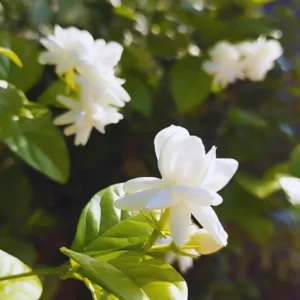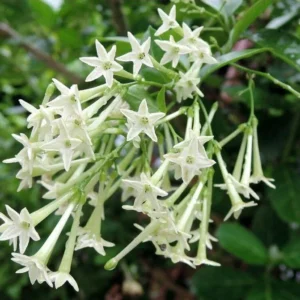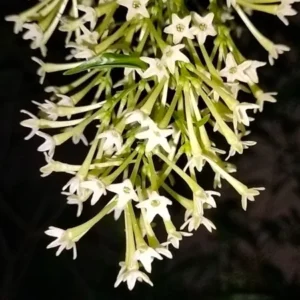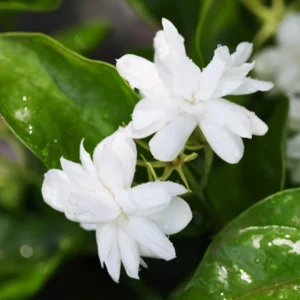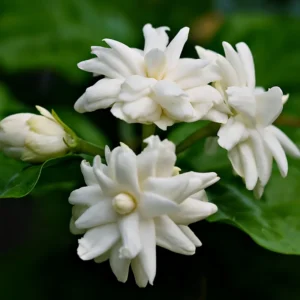Are you in love with the sweet scent of flowers and looking for a way to enhance your garden? Or perhaps you’re curious about how to grow and care for Arabian Jasmine, a beautiful and aromatic plant that will undoubtedly bring charm and elegance to your home or garden? You’re in the right place!
Arabian Jasmine, scientifically known as Jasminum Sambac, is a fragrant flowering plant that thrives in warm, tropical environments, and it’s easy to see why it has captured the hearts of gardeners around the world. Whether you’re a beginner or an experienced gardener, this guide will provide you with all the essential tips and insights on Arabian Jasmine care.
Let’s dive into everything you need to know to keep your Arabian Jasmine flourishing!
What is Arabian Jasmine (Jasminum Sambac)?
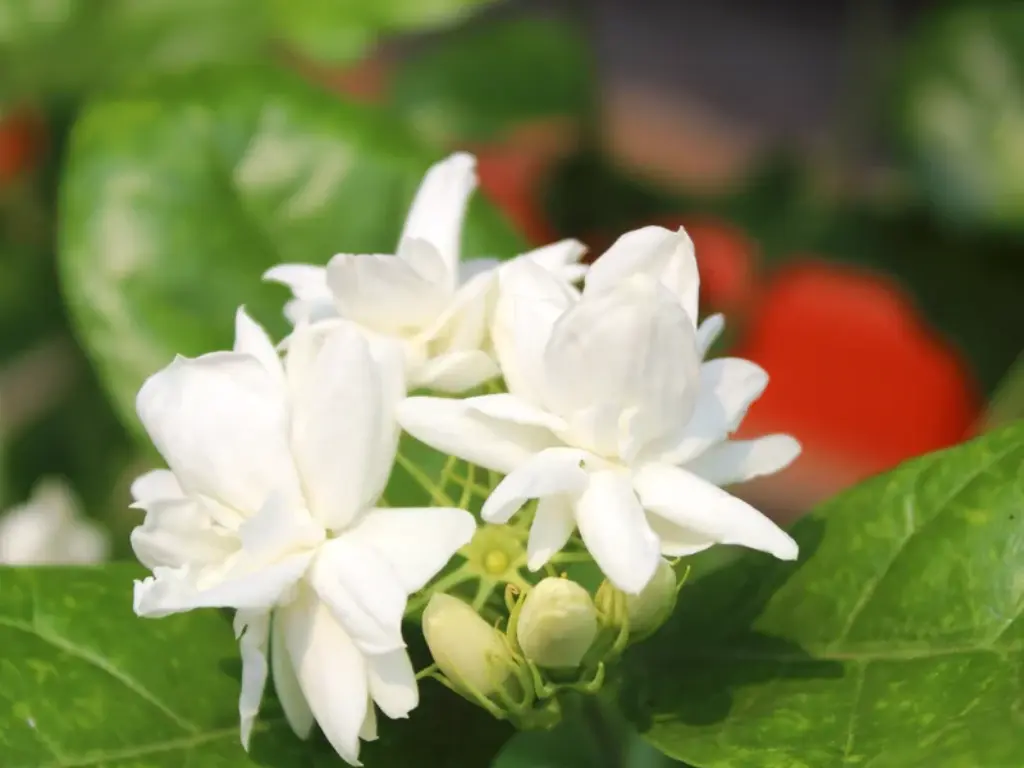
Arabian Jasmine, or Jasminum Sambac, is a beautiful shrub known for its delicate, fragrant white flowers. Native to Southeast Asia, this plant is not only admired for its beauty but also for its intoxicating aroma, which is often used in perfumes and teas. The plant is a member of the olive family and can be grown both outdoors in suitable climates and indoors with the right care.
Its ability to bloom throughout the year, especially in the warmer months, makes it a popular choice for gardeners in the U.S., where many people love cultivating fragrant plants like jasmine. Growing Arabian Jasmine in pots is also a common practice, especially for those with limited outdoor space.
| Attribute | Details |
|---|---|
| Common Name | Arabian Jasmine |
| Botanical Name | Jasminum Sambac |
| Growth Form | Shrub / Vine |
| USDA Zones | 8–11 |
| Bloom Season | Spring – Summer |
| Flower Colors | White, Cream, Light Yellow |
| Light Requirement | Full sun (4–6 hours) |
| Wildlife | Attracts bees, butterflies, and pollinators |
| Drought-Tolerant | Yes, once established |
How to Grow Arabian Jasmine
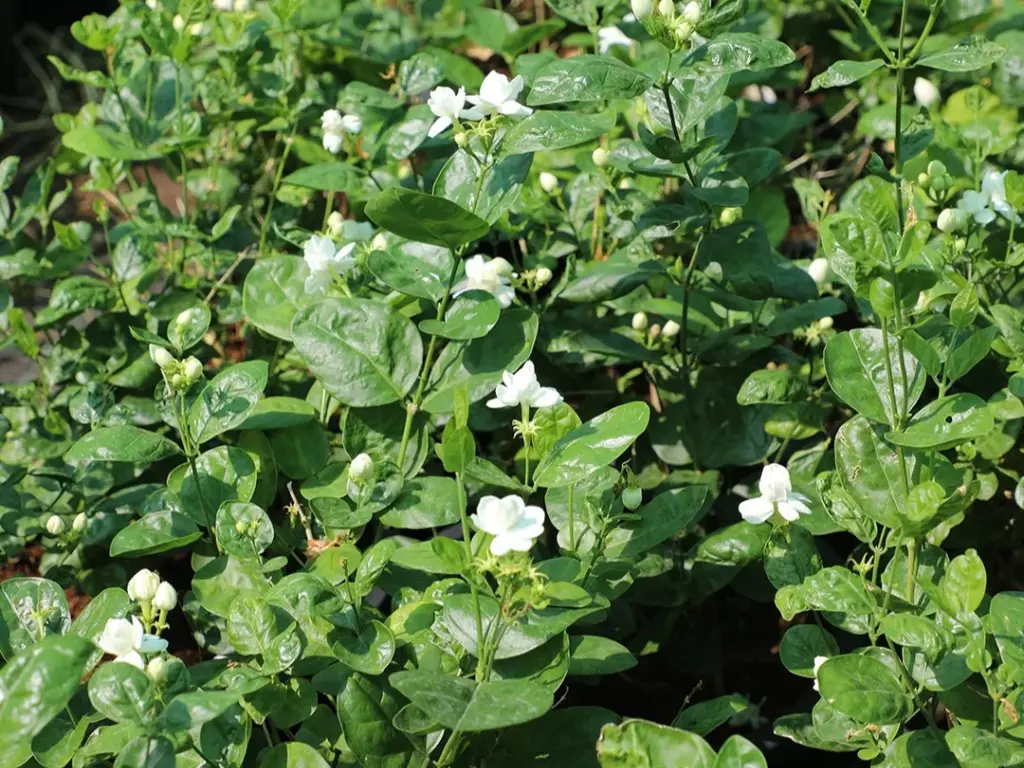
Growing Arabian Jasmine may seem intimidating at first, but once you understand its basic needs, it’s easy to see why this plant is a favorite among garden lovers. Here are the main steps for how to grow Arabian Jasmine successfully.
1. Choosing the Right Location
The first step in growing Arabian Jasmine is picking the right spot. This plant loves bright, indirect sunlight. So, try to place it where it can bask in the sunlight for about 4-6 hours a day. However, avoid placing it in direct sunlight during the hottest part of the day, as it can scorch the leaves and stunt its growth.
If you’re growing it indoors, a south or west-facing window is ideal. These windows get plenty of natural light throughout the day, helping your Jasmine grow strong and healthy. Just keep in mind that Arabian Jasmine doesn’t like being in the shade for too long – it’s a lover of the sun!
2. Preparing the Soil
Arabian Jasmine thrives best in soil that’s well-draining. Too much water sitting around its roots can lead to root rot. The ideal soil should be slightly acidic to neutral (around pH 6.0 to 7.0) and rich in organic matter. If you’re growing it in a pot, mix your regular potting soil with some sand or perlite to help improve drainage. You want the soil to be able to dry out between waterings, so good drainage is key to a healthy plant.
If you’re planting your Jasmine outdoors, choose a loamy soil that doesn’t retain too much water. This will help prevent the plant from becoming waterlogged during rainy periods. If your garden soil is heavy and tends to retain water, consider amending it with organic compost or well-rotted manure to improve its texture and drainage.
Read more: How to Prepare Soil to Plant: A Step-by-Step Guide for Beginners
3. Planting Arabian Jasmine
Planting Arabian Jasmine is a fairly simple process, whether you’re putting it in a pot or in your garden. If you’re growing it in a pot, make sure the container has drainage holes at the bottom. This will help excess water escape and prevent root rot. Choose a pot that’s large enough for the root ball, and one that allows the plant plenty of space to grow.
For outdoor planting, dig a hole that’s wide enough to accommodate the root ball. Arabian Jasmine doesn’t like to be crowded, so make sure there’s enough room for the roots to spread out. Mix some compost into the soil to enrich it and provide your Jasmine with the nutrients it needs to thrive. Once the hole is ready, gently place the plant into the ground, making sure it sits level with the surrounding soil. Afterward, water it thoroughly to settle the soil around the roots.
Essential Care Tips for Arabian Jasmine
Once your Arabian Jasmine is established, regular care is key to ensuring it thrives. Here are some essential Arabian Jasmine care tips to help keep your plant healthy and blooming.
1. Watering
Watering is one of the most important aspects of Arabian Jasmine care. This plant enjoys regular moisture, but it’s crucial not to overwater, as excess water can lead to root rot. To keep your Jasmine healthy, water it deeply but make sure the soil is allowed to dry slightly between waterings. This ensures that the roots aren’t sitting in moisture for too long, which can cause stress or damage to the plant.
If you’re growing your Jasmine indoors, it’s essential to keep an eye on the humidity levels in your home. Arabian Jasmine thrives in moderate humidity, and dry indoor air can cause the plant to become stressed. To help maintain optimal humidity, consider using a humidifier or placing a tray of water near the plant. Also, be sure to check the soil moisture regularly to avoid underwatering or overwatering.
2. Fertilizing
To keep your Arabian Jasmine healthy, it’s essential to fertilize it once a month during the growing season (spring and summer). A balanced, water-soluble fertilizer will help encourage strong growth and vibrant flowers. If you want your Jasmine to bloom abundantly, you might want to use a fertilizer with a higher phosphorus content, as phosphorus helps promote flower production.
During the fall and winter months, when the plant is resting, cut back on the fertilizer and reduce watering. This will give the plant a break and prepare it for the next blooming season.
3. Pruning

Pruning or pinching back is a crucial aspect of maintaining the health and shape of your Arabian Jasmine. While pruning involves cutting back branches, pinching back is a gentler method of removing the tips of young growth to encourage branching.
Pruning helps to maintain a compact shape, and when done correctly, it can lead to bushier growth with more blooms. You can prune your Jasmine to control its size, especially if it’s growing in a pot. For more vigorous growth, pinching back the plant can help it become more bushy and full. Both of these techniques promote healthier growth by allowing the plant to focus energy on developing new branches and flowers.
The best time to prune your Arabian Jasmine is after it has finished blooming. This allows you to remove any dead or damaged branches without losing any flower buds. Pinching is best done in the spring, as new growth begins to emerge.
4. Pest Control
Arabian Jasmine is relatively resistant to pests, but aphids, whiteflies, and spider mites may occasionally appear. Regularly check your plant for signs of pests and treat with organic insecticidal soap if needed. Neem oil is another natural solution for pest control.
5. Seasonal Plant Care Tips
Seasonal care for your Arabian Jasmine varies slightly depending on the time of year, so it’s important to adjust your routine to match the plant’s needs throughout the seasons.
-
Spring & Summer: During the growing season, Arabian Jasmine requires regular care to ensure it thrives. This is the time for watering, fertilizing, and ensuring it gets the proper amount of sunlight. Make sure your plant receives 4-6 hours of bright, indirect sunlight and water it when the top inch of soil feels dry. This is also the best time to prune or pinch back any leggy growth to encourage fuller plants.
-
Fall & Winter: As the weather cools down, Arabian Jasmine enters a resting phase, so its water and fertilizer requirements will reduce. You can water it less frequently, allowing the soil to dry out more between waterings. It’s also a good idea to reduce fertilization during this period, as the plant isn’t actively growing. If your Jasmine is indoors, try to ensure it’s not exposed to cold drafts, as this could stress it. Keep the humidity levels consistent during winter months to prevent the plant from drying out.
You may like:
- Ultimate Guide to Caring for Clerodendrum Wallichii: Tips &Tricks for Healthy Growth
- Eucalyptus Care: 10 Expert Tips for Growing Thriving, Aromatic Trees at Home
- Ultimate Guide to Cape Honeysuckle Care: Tips for a Thriving Vine
Common Problems When Growing Arabian Jasmine
Like any plant, Arabian Jasmine can encounter a few issues during its growth. Let’s look at some common problems you might face and how to address them.
1. Overwatering and Root Rot
Overwatering is one of the most common mistakes when growing Arabian Jasmine. It leads to root rot, which can kill the plant. To avoid this, ensure your pot or garden bed has good drainage, and only water when the top inch of soil feels dry.
2. Poor Flowering
If your Arabian Jasmine isn’t blooming as expected, it might not be getting enough sunlight. Make sure the plant receives at least 4-6 hours of indirect sunlight each day. Another reason could be insufficient fertilization—consider switching to a phosphorus-rich fertilizer to encourage flowering.
3. Yellowing Leaves
Yellowing leaves on an Arabian Jasmine plant can be a sign of overwatering, nutrient deficiencies, or exposure to cold temperatures. If your plant is indoors, ensure it’s not exposed to cold drafts, and check your watering routine. Yellow leaves can also indicate a need for a balanced fertilizer.
Best Growing Practices for Arabian Jasmine in Different Environments
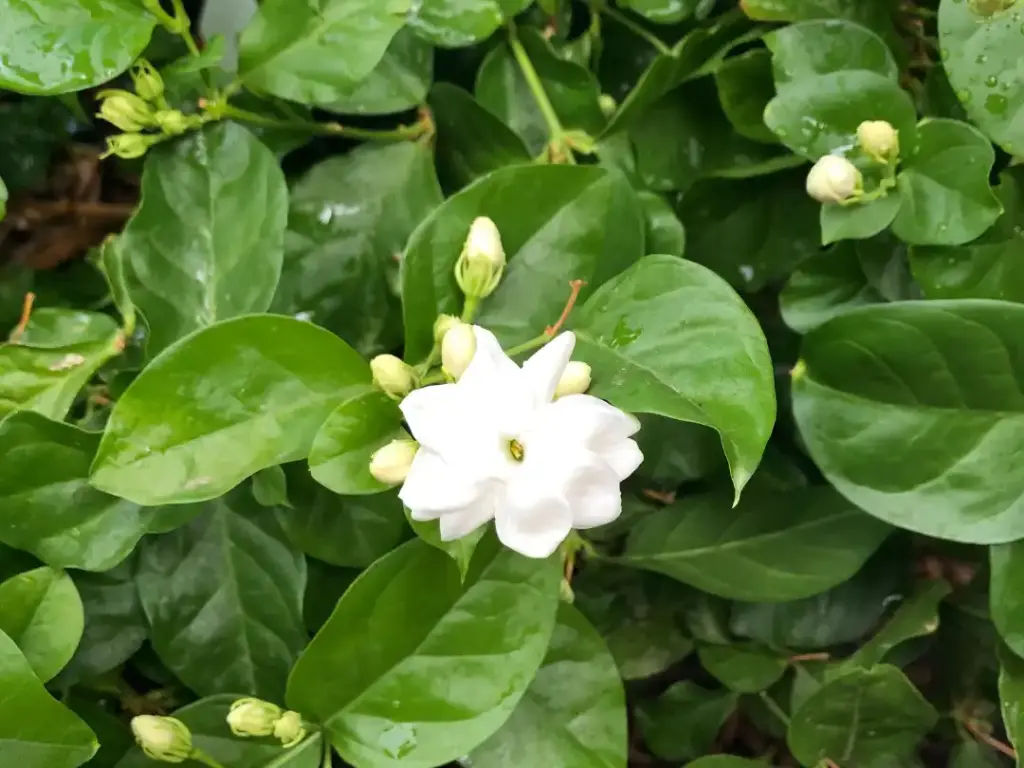
Here are some best growing practices based on where you are cultivating your Jasmine plant.
1. Container Growing
When growing Arabian Jasmine in containers, choose a pot that’s at least 12 inches in diameter and has drainage holes. Container plants need more frequent watering than garden-planted ones because the soil dries out faster in pots.
2. Landscaping Ideas
Arabian Jasmine can also be used for landscaping. Its climbing habit makes it a perfect choice for trellises, fences, or arbors. You can also plant it in flower beds to add color and fragrance. Just be sure to provide it with adequate support if you want it to climb.
How to Propagate Arabian Jasmine
One of the best things about Arabian Jasmine is how easy it is to propagate. If you have a mature plant, you can easily grow new Jasmine plants through cuttings.
1. Cutting Preparation
Take a 4-6 inch cutting from a healthy Jasmine plant, making sure it has at least one leaf node. Remove the lower leaves and dip the cut end in rooting hormone to encourage root development.
2. Rooting the Cutting
Place the cutting in a small pot with well-draining soil and keep it moist. After a few weeks, the cutting should develop roots. Once the roots are established, you can transplant it into a larger pot or your garden.
Read more: How to Grow Quaking Aspen Trees from Root Cuttings
Benefits of Growing Arabian Jasmine
Growing Arabian Jasmine isn’t just about having a beautiful plant in your garden. Here are some benefits you can enjoy:
-
Aromatic Flowers: The sweet fragrance of Jasminum Sambac makes it ideal for use in perfumes, teas, and aromatherapy.
-
Low Maintenance: Once established, Arabian Jasmine is relatively low-maintenance, making it an excellent choice for both novice and experienced gardeners.
-
Attractive to Pollinators: Jasmine flowers attract pollinators like bees and butterflies, which can help improve the health of your garden.
Frequently Asked Questions (FAQ)
1. How often should I water my Arabian Jasmine plant?
Water your Arabian Jasmine when the top inch of soil is dry to the touch. Avoid overwatering, as it can lead to root rot. Make sure the pot or garden bed has good drainage to prevent water from accumulating around the roots.
2. Can Arabian Jasmine grow in low light?
While Arabian Jasmine can tolerate some shade, it thrives in bright, indirect sunlight. It needs at least 4-6 hours of sunlight a day to bloom properly. If it’s grown indoors, place it near a south or west-facing window for the best results.
3. What is the best fertilizer for Jasmine?
A balanced, water-soluble fertilizer is ideal for Arabian Jasmine during the growing season (spring and summer). To encourage blooming, you can switch to a phosphorus-rich fertilizer, as phosphorus helps promote flowers.
4. How long does it take for Arabian Jasmine to bloom?
Arabian Jasmine typically starts blooming within 1-2 years after planting. The plant needs the right conditions—adequate sunlight, proper watering, and fertilization—to bloom beautifully. Once established, it may bloom multiple times a year, particularly in warm seasons.
5. Is Arabian Jasmine toxic to cats?
No, Arabian Jasmine is non-toxic to cats. However, as with any plant, it’s a good idea to discourage your cat from chewing on the leaves, as consuming too much of any plant may cause mild stomach upset. If your cat is prone to nibbling on plants, you can consider placing your Jasmine in an area that’s out of reach.
Conclusion
Now that you have all the essential information on Arabian Jasmine care, you’re ready to start growing your own beautiful Jasmine plant! Whether you’re planting it in your garden or growing it in containers, following these care tips will ensure your Jasmine thrives and fills your space with its sweet fragrance. Happy gardening!
If you’re looking for more gardening tips or want to learn about other fragrant plants, check out our other articles on plant care and home gardening.
Jasmine collection for you!

